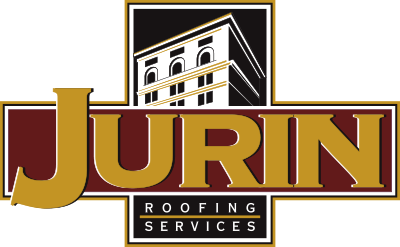Ladies and gentlemen, boys and girls, children of all ages! I proudly present to you the latest and greatest technology to hit the roofing industry since the hammer…. PVC! That opener works best if you imagine me using my announcer voice by the way.
If I’m being honest here, the PVC roofing membrane isn’t actually all that new. It’s actually been around since the mid 1960s. So why haven’t I heard of PVC in roofing you ask? Great question!

Photo: Carlisle SynTec
PVC Roofing Material
PVC, utilized heavily in roofing in Europe for years, is not as well known in the United States which comes down to a lack of product education to the consumer.
I imagine you immediately think of the PVC piping you used to make your potato gun when you were a kid. You’re not far off. PVC in its natural form is rigid so plasticizers are added to make it a flexible sheet for roofing.
PVC roof material is composed of two main components: ethylene and chlorine. Petroleum or natural gas is processed to produce ethylene, while chlorine is derived from salt.
PVC roof material is composed of two layers of PVC with a polyester reinforcement scrim in between. The top ply contains additives that make the membrane UV resistant. The top layer also contains the plasticizers that make the sheet flexible. The bottom ply is black PVC and also contains plasticizers for flexibility.

Photo: Chris – Flickr (Creative Commons)
Benefits of PVC Roofing Material
On the roofing contractor’s side, PVC roof membranes are really great to work with. They’re incredibly flexible, which is great for the installation process, and they have a great track record for longevity and performance. There are some really great benefits for buildings owners as well.
#1 – PVC Roofing is Weldable
- The seams are welded to the adjoining sheet ensuring a water-tight and extremely durable seal.
- PVC sheets can also be made to look like standing seam roof systems by welding a pre-manufactured rib to the surface. This creates an aesthetically pleasing system at a much lower price point. With the array of sheet colors available you won’t be short on options.
#2 – PVC Roofing is Fire Resistant
- Even though the product is weldable, it’s one of the only single-ply membranes that extinguishes itself once the heat source has been removed.
#3 – PVC Roofing is Environmentally Friendly
- PVC membranes are recyclable and some manufacturers offer this service at no cost to the building owner. When an old PVC sheet is removed from the roof, it is picked up by the manufacturer and re-used in new sheets.
- The manufacturing process uses natural gas and saltwater as opposed to petroleum based manufacturing.
#4 – PVC Roofing is Durable
- There are PVC roof systems that have been in place for 45 years and counting. Regular maintenance is highly recommended to help prolong the service life but a high quality product goes a long way.
- A lower life-cycle cost on your roof means budgets can be allocated to other areas of the building.
#5 – PVC Roofing is Resistant to Chemicals
- PVC roof membrane inherently resists oils, chemicals, and grease better than many other roofing membranes. Such applications could be industrial settings, manufacturing processes, or fast food tenants.
- This higher resistance means less damage to the roof system and less money spent on remediation of such contaminants.

Considering a PVC Roofing System?
As you can see, there are a lot of great benefits that go along with installing PVC roof materials for your next roofing project. However like anything else in roofing, not all PVC sheets are created equal. I would encourage you to research the manufacturers and do a little homework on finding a highly skilled roofing professional. Finding a high quality membrane and a skilled roofer will go a long way when you invest in your next roof system.






